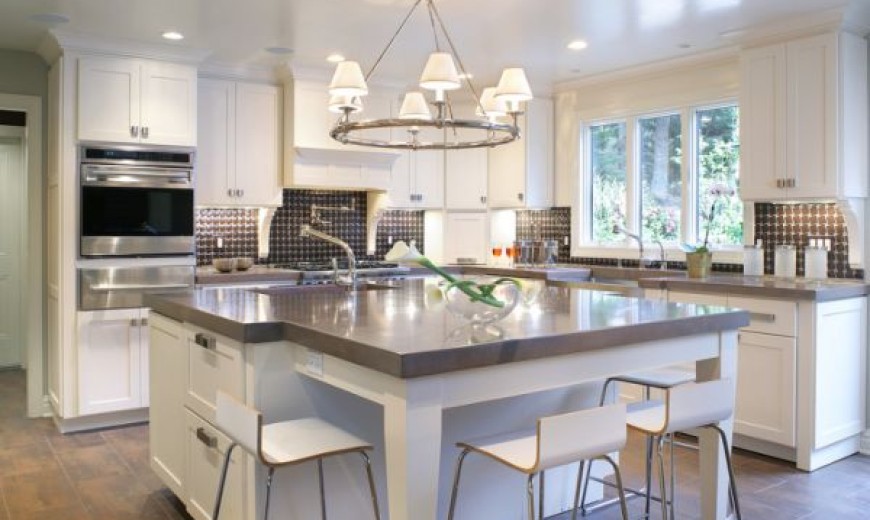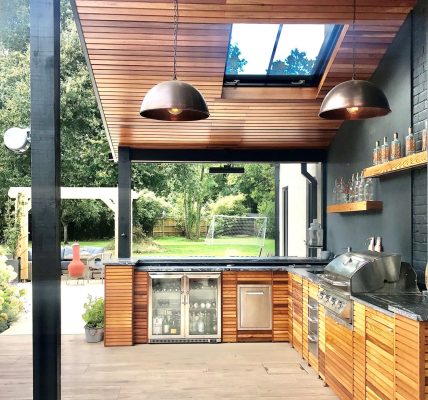The kitchen is the hub of your home. It’s one room where a lot of activities occur at once, so getting the layout right can be challenging.
Ensure the cook moves unimpeded between all three points of the working triangle by keeping through-traffic clear. To do this, avoid letting partial-height obstacles like cabinetry or tables obstruct the path.
Color Palette
Color is a powerful design tool in any room, and the kitchen is no exception. Strong hues can make a room feel exotic and high-energy, while softer shades can evoke a quaint, dreamy ambiance.
When it comes to picking a palette for your kitchen, consider how you use the space. If you entertain, you may want a scheme that encourages conversation or draws people together. On the other hand, a busy cookspace might benefit from an energising shade like red or a soft terracotta.
Neutrals are a natural choice for kitchens, but they don’t have to be boring. In fact, a palette of warm neutrals can look quite stunning when executed with flair. For example, if you have honey oak cabinets with warm neutral walls and a dark wood island, try pairing them with powder blue appliances for a one-of-a-kind combo. Or, go the opposite route and contrast warm neutrals with a splash of vibrant color (such as neon pink). The result is sure to be eye-catching.
Cabinetry
A kitchen’s cabinetry defines how the space looks. For example, the door style and color, plus the amount of sheen, are important considerations for your overall design.
Generally speaking, custom cabinets offer a higher level of quality than stock units. The cabinet boxes and doors can be made of solid wood or particleboard and melamine, with a variety of species, grain patterns and textures available.
Traditional styles typically feature ornate trim, while transitional designs tend to have more stripped-down borders and inlays. The Mennonite and Amish communities of Lancaster County, Pennsylvania have a centuries-old heritage of handcrafted millwork; their company Rutt Cabinetry produces cabinetry that reflects this timeless craftmanship.
Cabinetry also includes hardware upgrades, such as full-extension drawer guides and soft-close stops that help keep doors and drawers from slamming shut. The number of drawers and cabinets and the layout are also factors when deciding on a storage solution for your new kitchen.
Backsplash
A kitchen backsplash protects the wall behind the sink from water damage and helps catch grease splatter and food stains during meal prep. It’s primarily functional, but when designed with an eye toward beauty, it can also serve as a design element.
Backsplashes are available in a wide range of materials and shapes. Tile is one of the most popular, as it’s inexpensive and easy to clean. Try combining different sized and shaped tiles to create patterns and designs. Tiny round tiles, called penny tiles, are a great choice for a modern and energetic look. Rectangular tiles in different sizes and colors can add a more classic, timeless feel to your kitchen.
Metal backsplashes are durable and offer a unique, industrial-inspired style. Stainless steel is especially hard-wearing and easy to keep clean, though it’s typically a more expensive option. If you don’t want to commit to a permanent material, consider a wallpaper backsplash. Backsplash wallpapers come in a variety of styles, from mermaid scale to Peranakan designs and time-worn styles with realistic patina.
Lighting
Whether you’re looking to add a statement piece or keep things simple and neutral, lighting is an important part of kitchen design. The right layered approach helps illuminate shadowed areas and brighten your work spaces.
The first layer is ambient light, which comes from ceiling lights and windows. If you have a low ceiling, avoid fixtures that hang too far down and make the room feel smaller. Instead, opt for flushmount or semi-flushmount ceiling lights that blend into the space.
Another great option for ambient lighting is strip lighting, which runs around the bottom of cabinetry. This gives the kitchen a glow and can be controlled to change colour for a fun effect. Lastly, consider using feature lighting to draw attention to specific elements of the room. For example, a strip of coloured LEDs running around the top of a glass-fronted cabinet can be controlled to change colour and highlight these beautiful pieces in your kitchen.

